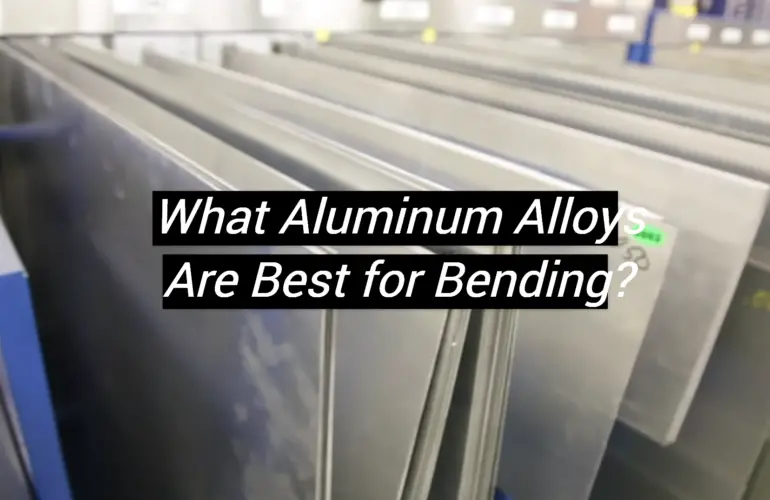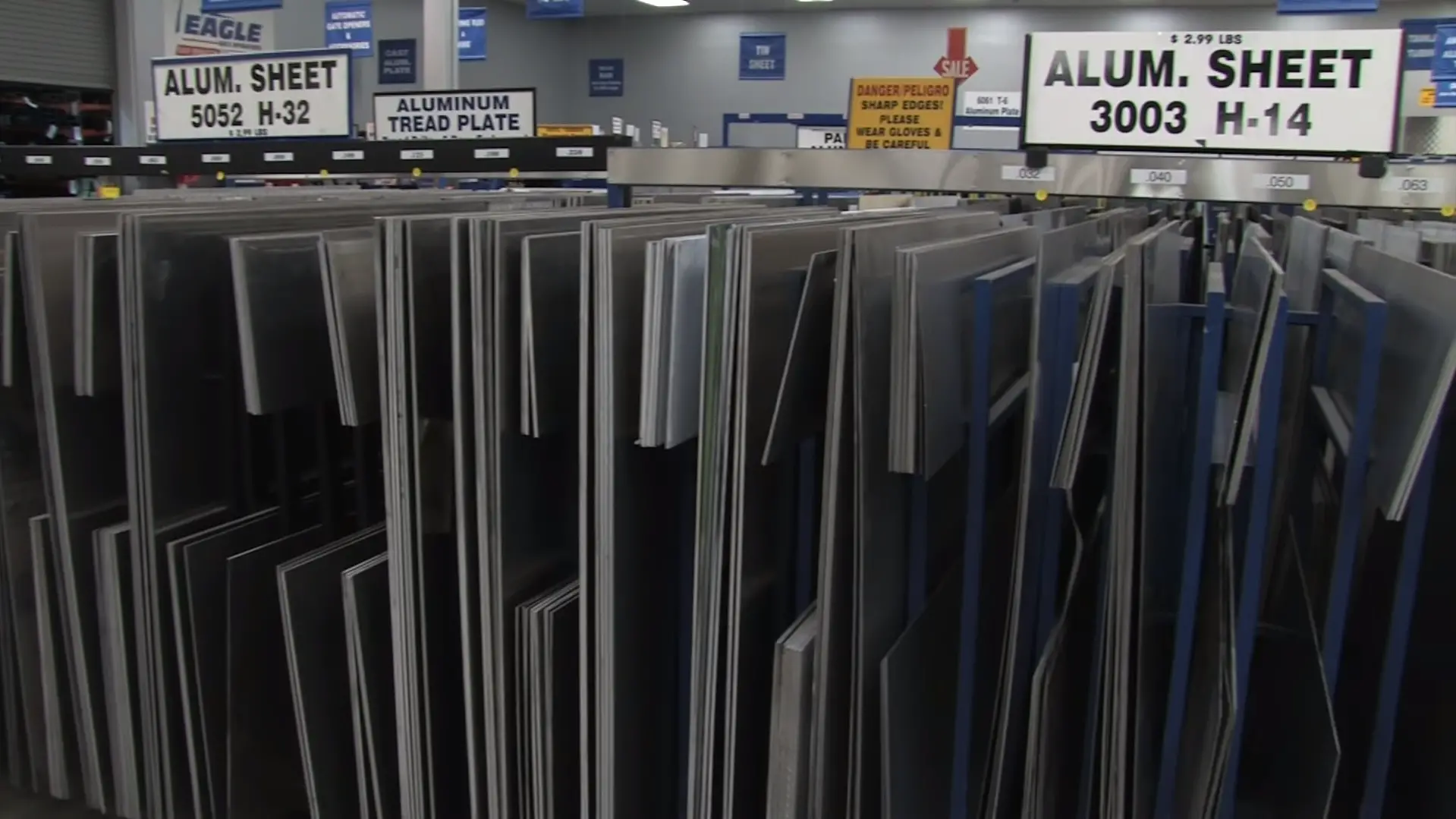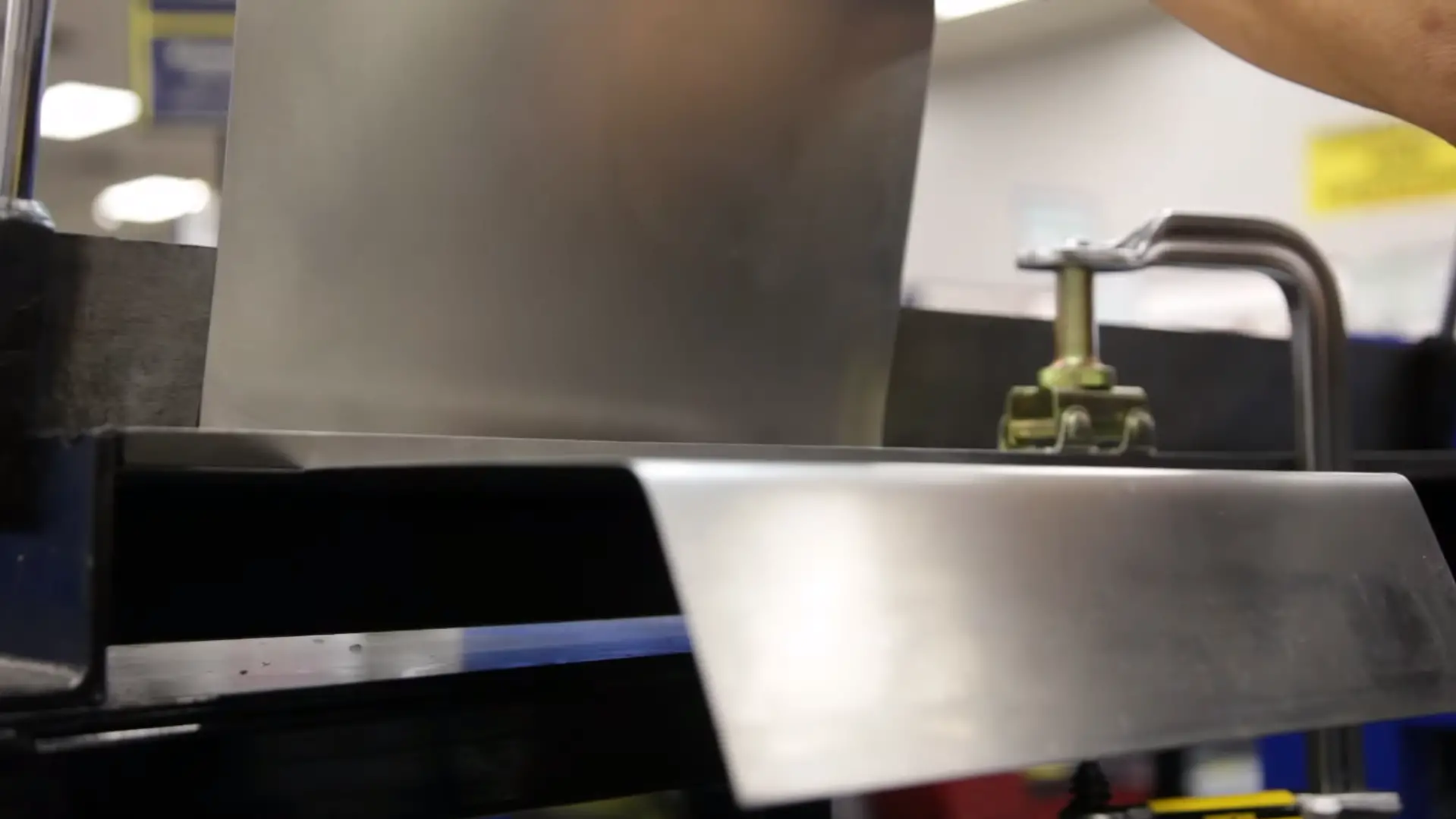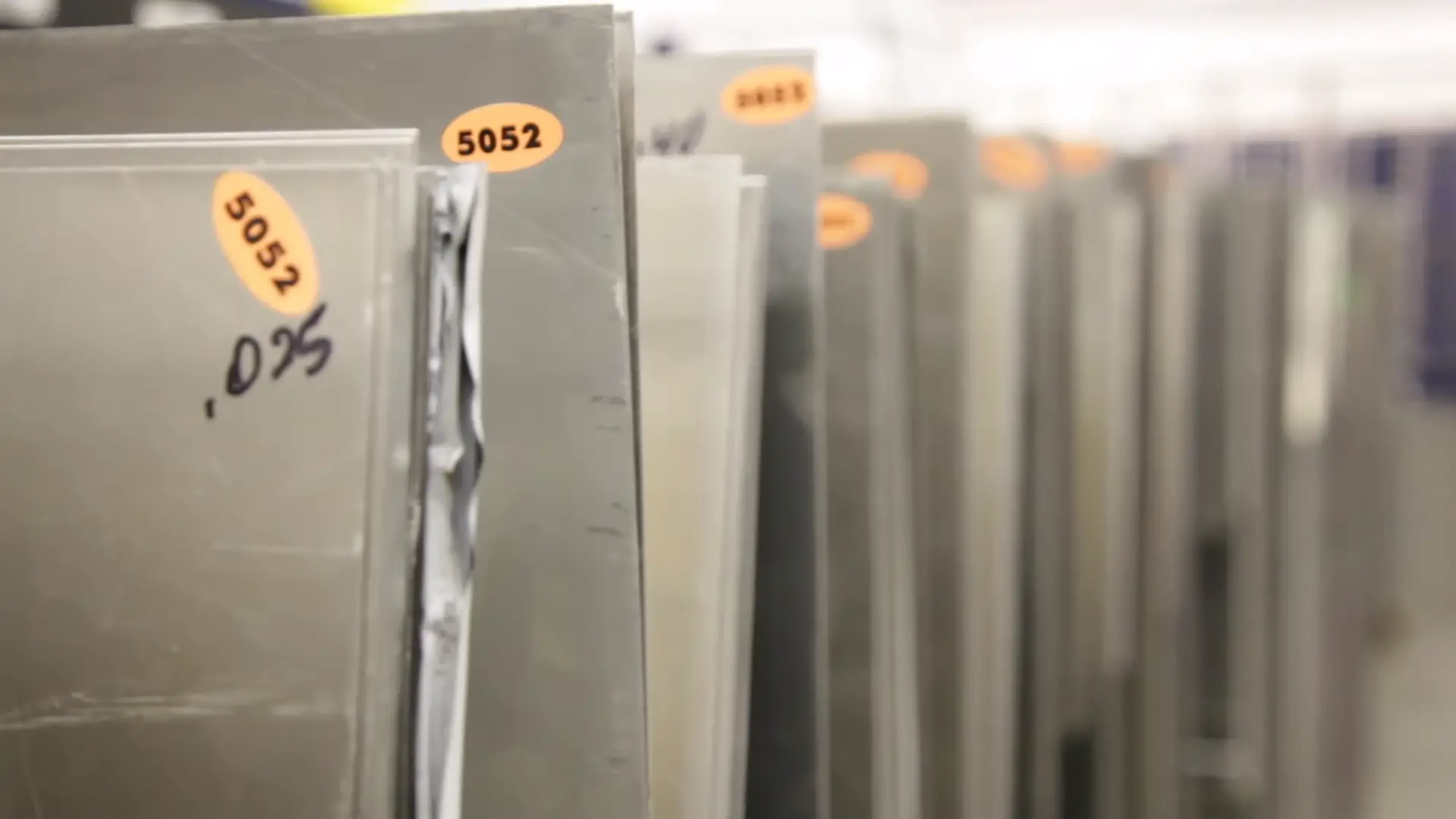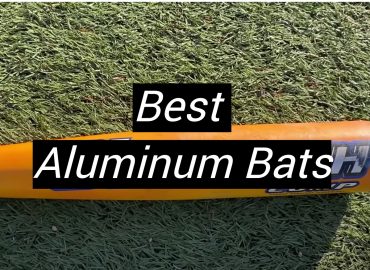If you’re working in a field that deals with aluminum, you may have heard the phrase “aluminum alloy.” Aluminum alloys are used in a wide range of applications, from aerospace to construction, due to their lightweight, strength, and corrosion resistance. If you’re working with aluminum, it’s essential to know what alloys are best for your project. In this blog post, we’ll cover what aluminum alloys are best suited for bending.
How Does Aluminum Bending Work?
Aluminum bending is done pretty frequently in the manufacturing of everything from airplane parts to car frames. But have you ever wondered how it’s done?
First of all, it is essential to know that the actual bending process will depend on the type of aluminum being processed and the machinery being used. However, we’ll provide a general guideline that applies to most methods.
The press brake will force the aluminum down into the lower die and up into the top die, creating a U-shape or a V-shape bend. The pressure is adjusted depending on the thickness and type of aluminum being used. It’s important to note that some types of aluminum can break or crack if they are bent improperly, so operators must know what they’re doing.
Another way to bend aluminum is through roll bending. This process relies on a set of rollers to bend the metal into a specific shape. The advantage of roll bending is that it is more automated than press braking, making it ideal for larger projects that need to be produced quickly.
Once the aluminum is rolled into the desired shape, it may undergo further processes like trimming, punching, welding, sanding, or finishing. The addition of these steps ensures that the finished product is a perfect fit for its intended purpose.
Factors Affecting Bending of Aluminum Alloys
Bending is one of the most common processes done on aluminum alloys. However, this process can be challenging if you don’t understand the factors that affect it. Here we have the most important ones.
Formability:
Formability is one of the most critical factors that affect the bending process of aluminum alloys. This property relates to the alloy’s ability to deform without cracking. Different alloy grades have varying formability properties, which determine how much they can be bent without cracking. Generally, alloys with higher formability can be bent more without cracking. Therefore, you should choose an alloy with a formability level that is suitable for your bending application. [2]
Alloy Composition:
One of the most critical factors that affect aluminum alloy bending is its composition. Different alloys have different chemical compositions, and the alloy’s structure and composition can affect its strength, ductility, and malleability. Pure aluminum is highly malleable, but it lacks strength and is prone to cracking. Alloying aluminum with other metals, such as copper, magnesium, and silicon, can increase its strength and toughness, but that can also increase its brittleness and decrease its malleability. Therefore, the alloy’s composition must be carefully selected to achieve the desired balance of strength and ductility, depending on the application and the bending process used.
Temper Condition:
The temper condition or heat treatment of the aluminum alloy can also significantly affect its bending properties. Aluminum alloys have various temper designations, such as O (annealed), H (strain-hardened), T (thermally treated), and F (fabricated). Each temper condition has unique properties that affect the alloy’s bendability, formability, and strength. For instance, alloys in the O temper condition are more malleable but less strong, while alloys in the H temper condition are stronger but less ductile. Understanding the temper condition of the aluminum alloy is vital in choosing the right bending tools and techniques.
Lubrication:
The use of lubricants is also essential in aluminum alloy bending. Lubricants can help reduce friction and prevent surface defects and cracks during the bending process. There are various lubrication methods used, such as applying a lubricant coating on the bending tool, spraying lubricants directly on the aluminum surface, and using roller dies with built-in lubrication. Choosing the right lubricant and lubrication process can significantly improve the quality and efficiency of the bending process.
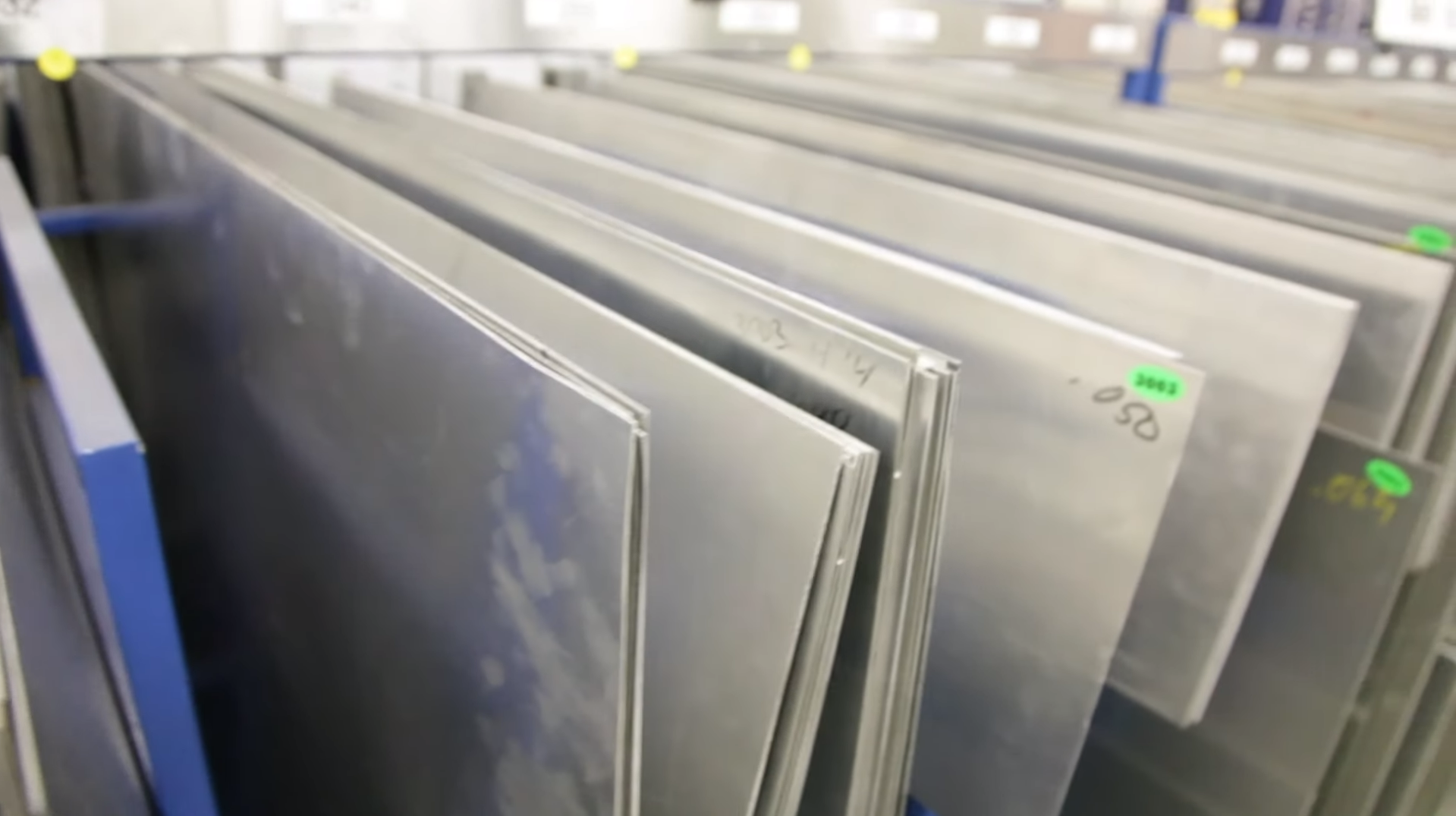
Thickness of Bend Radius:
The thickness of bend radius is another critical factor that affects the bending of aluminum alloys. This property refers to the thickness of the metal being bent. The thicker the metal, the larger the bend radius required. Failure to use an appropriate bend radius can cause damage to the metal’s surface, such as cracking or tearing. Therefore, it is essential to select a suitable bend radius to prevent damage to the metal. [2]
Level of Elongation:
The level of elongation is another vital factor that affects the bending of aluminum alloys. This property refers to the degree that the metal can be stretched before breaking. Alloys with higher elongation can be bent further without cracking. Usually, the elongation property of an alloy is a trade-off with its strength. Alloys with higher strength properties tend to have lower elongation, making them more prone to cracking during the bending process. [2]
Bending Process:
Another critical factor affecting aluminum alloy bending is the bending process used. There are several bending techniques used in various industries, such as roll bending, press braking, and stretch bending. Each method has unique advantages and disadvantages, and the bending process must be carefully chosen based on the alloy’s properties, design specifications, and production requirements. For instance, alloys with high strength and low ductility may require high bending forces and specialized tooling, while those with high ductility and low strength may need a low force bend or a more straightforward bending process.
Surface Finish:
The surface finish of the aluminum alloy is another factor that affects the bending process. Different finishes may have different mechanical properties that directly affect the bending process. Some finishing treatments increase the metal’s hardness, which can make it more challenging to bend. Others may increase its formability, making it more pliable. It is crucial to select the right finish for your aluminum alloy to ensure success in the bending process.
Understanding these factors and selecting an alloy with suitable properties for your application is critical. It is essential to take caution when bending aluminum alloys to prevent cracking or deformation. With the correct handling techniques and selection of the right alloy, you can achieve high-quality bends that meet the required standards.
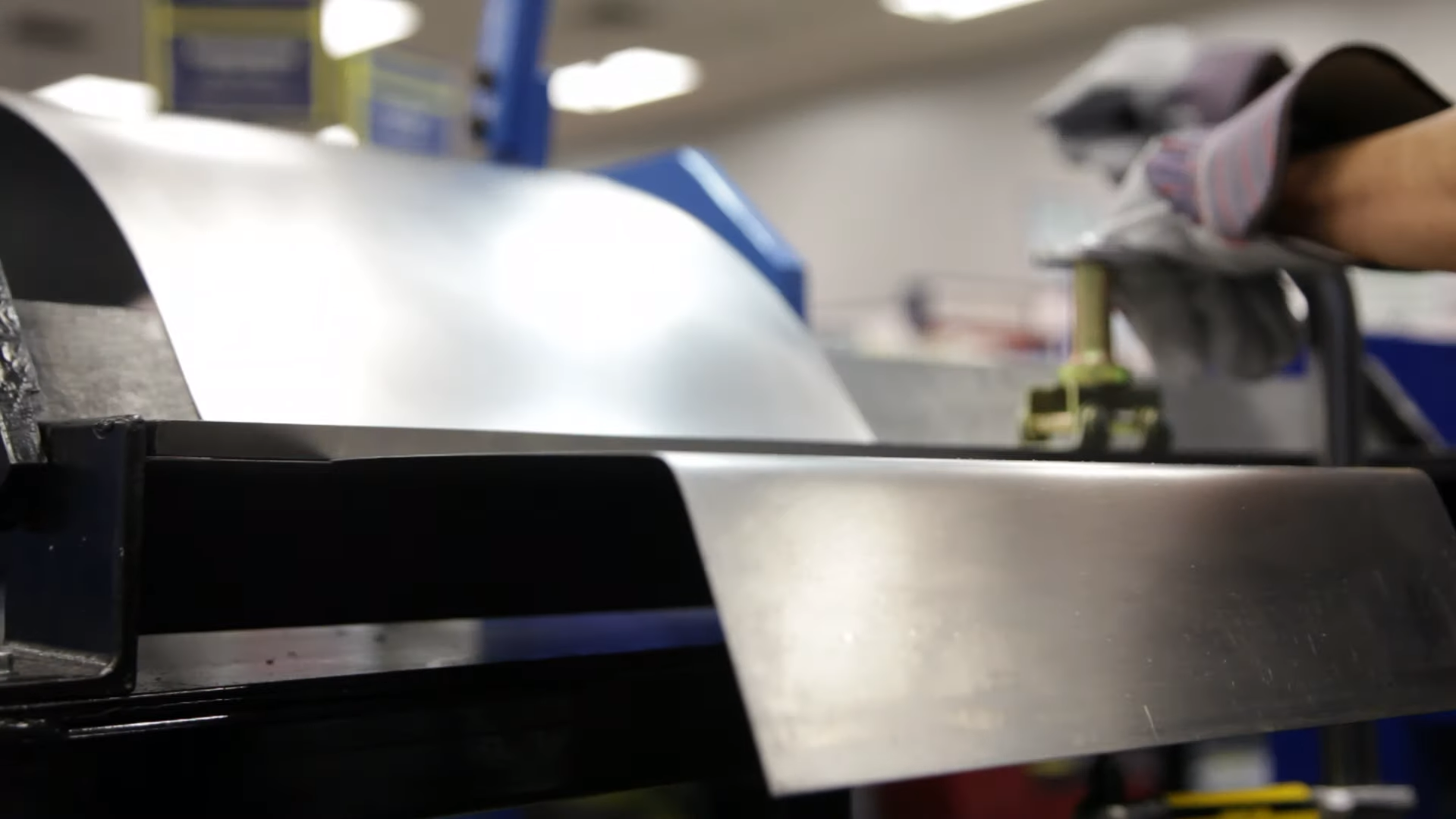
The Top 5 Aluminum Alloys for Bending
It’s important to understand that not all aluminum alloys can be easily bent. Certain alloys have a higher tensile strength, meaning that they are less malleable and require more force to bend without breaking. The best aluminum alloys for bending are those with a lower tensile strength. The following are some of the best aluminum alloys for bending:
- 3003 aluminum alloy – This alloy is known for its excellent workability and formability. It’s commonly used in the manufacture of cooking utensils, roofing, and transportation parts. [3]
- 5052 aluminum alloy – This alloy is also known for its excellent formability and workability. It’s often used to manufacture electronic chassis, aircraft parts, and marine equipment. [1]
- 6061 aluminum alloy – This alloy is a versatile and popular choice in manufacturing. It has excellent strength and can be easily formed, making it ideal for bending. It’s commonly used in the manufacture of structural and transportation parts. [1]
- 6063 aluminum alloy – This alloy is known for its excellent extrudability, making it a popular choice for architectural and decorative purposes. It’s also easily formed and has good corrosion resistance.
- 7075 aluminum alloy – This is a high-strength alloy primarily used in aerospace, marine, and automotive applications. While it’s not as malleable as the other alloys on this list, it can still be bent with the right equipment and techniques.
When choosing an aluminum alloy for bending, it’s important to consider your specific application. The best alloy will depend on factors such as the level of bend required, the geometry of the part, and the expected end-use.
Essential Machinery for Aluminum Sheet Bending
Aluminum sheet bending is a common metalworking process in various industries such as aerospace, automotive, and construction. Different machinery and tools are used to perform this process. However, not all bending machines are made equal. Some are more efficient and effective than others depending on the type of aluminum sheet you’re using and the intricacy of the bending project. Here is the list of the top machinery for aluminum sheet bending.
Plate Bending Rolls: Plate bending rolls are essential for aluminum sheet bending because they are made to handle larger and thicker metal sheets. These sophisticated machines come in different sizes and can easily bend aluminum sheets with minimal effort and pressure. They work by applying hydraulic force to press the aluminum sheet between three rolls – two bottom rolls and one top roll. The two bottom rolls are responsible for moving the metal sheet back and forth while the top roll puts pressure on the sheet to make it conform to the desired shape.
Press Brake: A press brake is a machine that applies pressure to metal sheets using hydraulic or mechanical force. This equipment is perfect for creating accurate bends as it can handle thicker aluminum sheets. Press brake machines come with different features like automatic backstop for consistent bending and adjustable hydraulic crowning to ensure even bending.
Roll Benders: Roll benders are versatile machines that can perform different types of sheet metal bending, including aluminum. It is perfect for creating circular or curved shapes. Roll benders work by placing the aluminum sheet between the top and bottom rollers and then applying pressure to make it conform to the desired shape.
Shearing Machines: Shearing machines are a crucial tool for cutting and trimming aluminum sheets. They come in different sizes and can cut through various sheet thicknesses. The machine uses a blade to shear the aluminum sheet cleanly and accurately. A good shearing machine will make your aluminum sheet bending process more precise and faster.
Whether you’re a DIY enthusiast or a professional metalworker, investing in these machines will make your work more efficient and less time-consuming. You must invest in quality machinery that aligns with the scale and complexity of your aluminum sheet bending projects. With the right machinery and tools, you can effortlessly create stylish and sturdy aluminum sheet structures that will last a long time.
FAQ
What aluminum is easiest to bend?
The Aluminum 3003 alloy is an excellent option for bending due to its high formability features. This alloy contains copper, manganese, and aluminum that enhance its strength and malleability features. It’s commonly used in the manufacturing of kitchen utensils, chemical equipment, and cladding sheets. The 3003 aluminum alloy is also ideal for forming intricate shapes needed in decorative and architectural applications. [3]
What is the most flexible aluminum?
3003 and 5052 aluminum are known for their corrosion resistance, also are softer and more flexible.
Is all aluminum bendable?
Not all aluminum is bendable. The bendability of aluminum depends on several factors, including the alloy composition, temper, thickness, shape, and bending process. If you’re unsure about the bendability of aluminum, speak to a professional metal fabricator who can help guide you in the right direction.
Is 6061 good for bending?
6061 aluminum alloy is one of the best aluminum alloys for bending. It’s lightweight, durable, strong, and easy to manipulate, making it an ideal choice for a wide range of applications. Its flexibility, affordability, and extraordinary mechanical characteristics enable it to be a versatile choice that meets the demands of a broad range of industries. Whether you’re bending for personal projects or industrial applications, the 6061 aluminum is a fantastic choice. [4]
Does 5052 aluminum bend easily?
In terms of its malleability, 5052 aluminum bends easily, especially when it experiences cold working, which can transform its temper from O or H32 to H34. This change increases its strength and hardness, thereby improving its ability to resist deformation and damage. Therefore, if you’re looking for a corrosion-resistant aluminum alloy that is easy to bend, 5052 is an excellent choice. [4]
Is 7075 aluminum bendable?
7075 aluminum is an alloy mainly composed of aluminum, zinc, copper, and magnesium, making it one of the strongest and most durable aluminum alloys available. However, its strength often comes at the expense of malleability, as it is generally not considered bendable. In other words, its high tensile and yield strength make it more likely to crack or break when bent beyond its elastic limit.
Which is stronger, 6061 or 6063 aluminum?
6061 and 6063 aluminum alloys are two of the most commonly used aluminum alloys in various industries, including aerospace, automotive, and construction. Nonetheless, 6063 aluminum is more malleable than 6061 aluminum, making it easier to bend and form into complex shapes. Therefore, the choice between 6061 and 6063 aluminum ultimately depends on your specific application’s requirements and design needs.
Useful Video: IMS Comparing Aluminum Alloys
Conclusions
In conclusion, choosing the right aluminum alloy for bending requires careful consideration of your project’s specific requirements. While there are several aluminum alloys that can be easily bent, it’s important to select the one that offers the best balance of strength, workability, and formability. Additionally, using the right equipment and techniques is crucial for successful bending of aluminum. By following these guidelines, you can ensure that your project is a success.
Now that you have a basic understanding of how aluminum bending works, you might have noticed that it is quite technical. But, it is still impressive to consider the engineering and mechanics required to produce such precise and reliable results. As a user, make sure you pick manufacturers that have experience and expertise, to ensure that the final product is of the quality that you desire.
References:
- https://aaluminum.com/blog/what-aluminum-alloys-are-best-for-bending/#:~:text=The%20top%203%20aluminum%20alloys,more%20versatile%20heat%2Dtreatable%20alloys.
- https://www.shapesbyhydro.com/en/material-properties/here-are-the-best-aluminium-alloys-for-bending/
- https://www.gabrian.com/best-aluminum-alloys-for-bending/
- https://www.absltd.co.uk/blog/what-makes-a-good-aluminium-alloy-for-bending/

